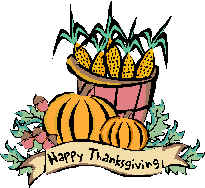 |
Around
the Table One
Thanksgiving season a family was seated around their table, looking at the annual holiday
bird. From the oldest to the youngest, they were to express their praise. When they came
to the 5-year-old in the family, he began by looking at the turkey and expressing his
thanks to the turkey, saying although he had not tasted it he knew it would be good. After
that rather novel expression of thanksgiving, he began with a more predictable line of
credits, thanking his mother for cooking the turkey and his father for buying the turkey.
But then he went beyond that. He joined together a whole hidden multitude of benefactors,
linking them with cause and effect.
He said, "I thank you for the checker at the grocery store who checked out the
turkey. I thank you for the grocery store people who put it on the shelf. I thank you for
the farmer who made it fat. I thank you for the man who made the feed. I thank you for
those who brought the turkey to the store."
Using his Columbo-like little mind, he traced the turkey all the way from its origin to
his plate. And then at the end he solemnly said "Did I leave anybody out?"
His 2-year-older brother, embarrassed by all those proceedings, said, "God."
Solemnly and without being flustered at all, the 5-year-old said, "I was about to get
to him."
Well, isn't that the question about which we ought to think at Thanksgiving time? Are we
really going to get to him this Thanksgiving? |
 |



